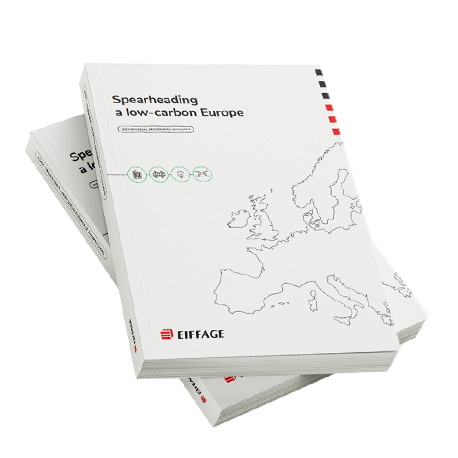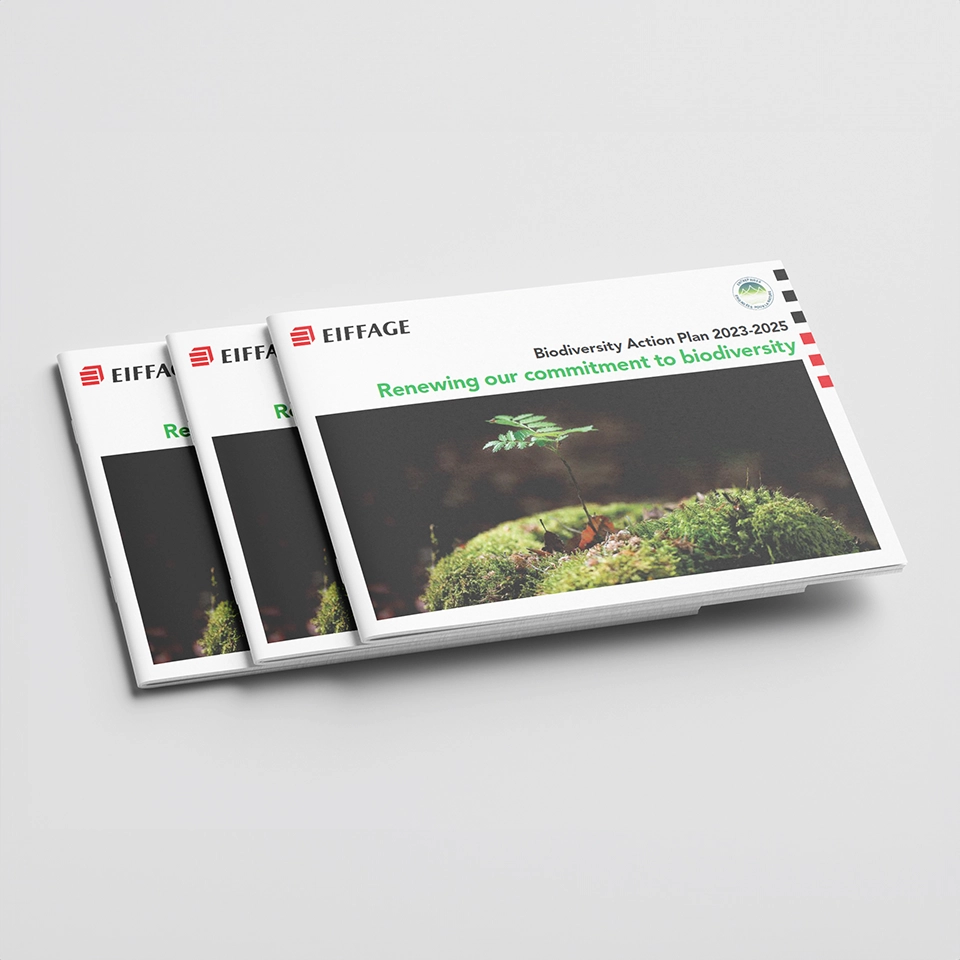Nature in an urban setting & urban agriculture
By 2050, 8 billion people will be living in urban areas. To support this mass movement of people to cities and pick up the pace of the environmental transition, Eiffage is stepping up the number of initiatives to introduce nature into urban settings, through urban agriculture, planted areas and green clusters. In this way, the Group facilitates the emergence of appealing urban centres that harmoniously blend the environment, biodiversity, sustainable farming and well-being for people living in cities.
Nature in an urban setting – an advantage for urban development projects
Reintroducing planted areas and agriculture into the heart of cities helps to increase their resilience to climate change while also boosting their appeal to the people who live there. Furthermore, encouraging the expansion of urban agriculture helps to promote short supply chains, reduce the greenhouse gas emissions caused by supplying residents with the products they need as well as generate local jobs. It is also a way to reassert the value of spaces that are currently underused, including outdoor areas, roofs and basements, which is why this approach constitutes a considerable opportunity in places where the price of land is very steep.
Urban agriculture initiatives exist in a variety of forms – using greenhouses, vertical farming, horizontal farming, in-ground or off-ground farming (raised beds, aeroponics, aquaponics or hydroponics), roof-top farming, underground farming, green façades, private allotments or community gardens. Local authorities and residents stand to gain from the substantial benefits urban agriculture brings to the ecosystem by enhancing biodiversity, developing short supply chains, boosting well-being, and improving stormwater management. The advantages in terms of health and the environment are substantial.
The BiodiverCity® label is awarded to property or urban development projects that take a wholly environmentally friendly approach to design, construction or operation. The label helps to better integrate environmental considerations into projects, for example by measuring the environmental potential of green spaces and certain elements of built-up areas, creating favourable conditions for wildlife, adopting practices to better manage biodiversity and incorporating bio-based and environmentally friendly materials. The strong connection this label has with nature and well-being also increases the value of the building (7.5%) and the occupancy rate, while also enhancing surroundings for users.
What do we mean by an urban heat island?
An urban heat island (UHI) describes a metropolitan area that is considerably warmer than its surrounding rural areas. The significant rise in temperature can be attributed to an accumulation of seasonal weather conditions, human activity, urban morphology and land take. It leads to discomfort for those living in these areas, in particular vulnerable populations such as elderly people and children. The situation is exacerbated during heat waves.
Planted areas represent a significant proportion of the future 20-hectare eco-district designed by Eiffage in Châtenay-Malabry, south of Paris. A vast green footpath will be developed, as well as a 1-hectare urban farm, which is expected to produce up to 6,000 tonnes of food per year. This sustainable farming solution will support the emergence of short supply chains, as fruits and vegetables will be sold directly to local schools and residents at a farm shop.
Similarly, the mixed development zone in Asnières-sur-Seine, north of Paris, will combine urban agriculture with social integration. Nearly 1.7 hectares of roof space will be turned into community gardens or spaces to grow food as part of an educational participative community project that will have a tangible impact: 4 urban farmers will be hired to produce 30,000 bottles of juice and 7,000 punnets of fruit. Orchards and vegetable gardens will help provide food to 4,000 residents and 2,000 employees in the local area.
Green clusters in city centres
The idea behind integrating vegetation into public and private spaces in towns and cities is to create green clusters that enable residents to better tolerate heat waves and the resulting urban heat islands. Experts from the building and construction industry will have to check the sustainability of existing structures, consider virtuous cooling methods, and systematically include green clusters in built-up areas.
As a company involved in building sustainable, resilient cities, Eiffage seeks to develop and deploy systemic and technical solutions to mitigate the effect of UHIs and create green clusters. The aim is to improve residents’ thermal comfort and quality of life by providing them with a full spectrum of targeted solutions and installations, including urban morphology, the choice of materials and road surfaces and the integration of vegetation and water in developments.
For example, in order to take a more quantitative approach on the matter, Eiffage Route has put in place a green cluster demonstrator in Hyères in the south of France. The road industry is looking at the subject, primarily because a considerable part of its work involves relaying road surfaces in urban redevelopment projects. The Hyères demonstrator has been designed to study the impact of different types of road surface (colour, granulometry, etc.) on temperature and thermal comfort, as well as the contribution water can have on cooling. Two weather stations and a large number of sensors have been installed to measure road surface temperature, air temperature at different heights and air humidity. The first measurement campaign took place in the summer of 2019 with this setup. In direct sunlight, surface temperatures were recorded to be 15-20°C higher on dark coloured roads than light coloured roads. The technical solutions developed by Eiffage Routes help to reduce air temperature by between 1 and 3°C. Eiffage intends to pursue its research by adding vegetation to the demonstrator.
Spotlight on off-ground agriculture
Off-ground agriculture is practised inside greenhouses or in closed, controlled environments. There are various kinds of off-ground agriculture:
- Aeroponics and hydroponics: mist (in aeroponics) or liquid (in hydroponics) substitute the use of soil to provide the plants with the nutrients they need.
- Aquaponics: a blend of aquaculture and hydroponics in which the water used to grow plants flows through a fish tank where it is enriched by fish waste in semi-closed systems. The plants and micro-organisms clean the water, meaning it can flow through the system indefinitely in a virtuous cycle.
-
-
Harnessing ecological engineering to restore biodiversity
Applying ecological engineering in regional development projects.
-
Quality of life and new uses
Eiffage harnesses technology and innovation to make the city of the future sustainable.

